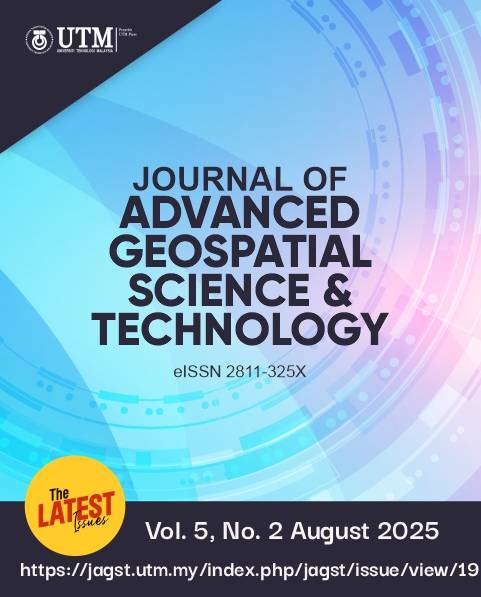Urban Heat Island Dynamics in Johor Bahru, Malaysia: Influence of Vegetation and Urbanisation on Surface Temperature
DOI:
https://doi.org/10.11113/jagst.v5n2.114Keywords:
Urban Heat Island, GIS, Remote SensingAbstract
Urban heat islands (UHIs) pose escalating challenges for tropical cities, intensifying thermal discomfort and exacerbating energy demands. This study examines the impact of vegetation cover and built-up intensity on land surface temperature (LST) in Johor Bahru, Malaysia, by combining remote sensing-derived indices, including the normalised difference vegetation index (NDVI) and the normalised difference built-up index (NDBI), with multiple regression modelling and spatial mapping. Landsat 8 imagery was processed to generate LST, NDVI, and NDBI layers, revealing heterogeneous spatial distributions characterised by pronounced thermal hotspots in densely built-up zones and cooler surfaces in areas of higher vegetation density. Unlike most prior NDVI–NDBI–LST studies that treat these indices separately, this study explicitly quantifies both their individual effects and their interaction. Simple linear regressions showed a moderate inverse relationship between NDVI and LST (adjusted R² = 0.253) and a positive association between NDBI and LST (adjusted R² = 0.568). Incorporating both indices into a multiple regression model explained approximately 57% of the variability in LST, with NDBI emerging as the dominant predictor. Introducing an interaction term (NDVI × NDBI) further improved model performance (adjusted R² = 0.579), highlighting that the cooling effect of vegetation is contingent upon surrounding built-up intensity. Spatial mapping underscored these findings, visually delineating areas where vegetation most effectively mitigates surface warming and identifying transitional zones that could benefit from targeted greening interventions. The results highlight the combined impact of vegetation and impervious surfaces on shaping urban thermal environments, providing critical insights for developing nuanced, context-specific urban heat mitigation strategies.
















